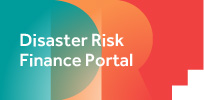Search New
Explore Funding
Filters
Filter your search by checking and unchecking the boxes below.
Before or After the disaster?
Own or Transfer the risk?
Instrument type?
Instruments Available
The ADB Emergency Assistance Grant is a standard emergency assistance grant provided by the ADB.
The ADB Emergency Assistance Grant is a standard emergency assistance grant provided by the Asian Development Fund (ADF), which provides assistance to ADB’s lower-income developing member countries.
The ADB Emergency Assistance Loan is a standard emergency assistance loan provided by the ADB.
Grant provided by the Asian Tsunami Fund (ATF), which was established to respond to the special circumstances surrounding the developing member countries (DMCs) that were stricken by the effects of the tsunami on December 2004. The fund provides ADB with a dedicated source of grant financing to support priority rehabilitation and reconstruction needs on a multi-sector basis.
The objective of this fund is to pool and deliver emergency grant financing promptly and effectively to affected DMCs for technical assistance (TA) and investment projects to support reconstruction, rehabilitation and associated development activities following the tsunami disaster.
The emergency relief operations of the AfDB’s Special Relief Fund are grants characterized by the need for prompt remedial actions to save and protect lives, salvage property and minimize the destruction of basic infrastructure. They are of a short-term nature, lasting from a few weeks to a few months.
Structure: The CCRT has two windows: (i) a Catastrophe Containment window, to provide assistance in containing a public health disaster; and (ii) a Post-Catastrophe Relief window, to provide exceptional assistance in the wake of a catastrophic natural disaster. The windows have different purposes, qualification criteria, and assistance terms.
Catastrophe Containment window:
Qualification: There are two alternative qualifying cases of public health disasters. The first concerns a life-threatening epidemic that has spread across several areas of the afflicted country, causing significant economic disruption, and has the capacity to spread or is already spreading to other countries. Significant economic disruption is defined by at least: (i) a cumulative loss of real GDP of 10 percent; or (ii) a cumulative loss of revenue and increase of expenditures equivalent to at least 10 percent of GDP. The second case concerns a life-threatening global pandemic that is inflicting severe economic disruption across the IMF membership and is creating balance of payments needs on such a scale as to warrant a concerted effort to support the poorest and most vulnerable countries through substantial additional grant support and debt service relief. To qualify for the support, the afflicted country should put in place appropriate macroeconomic policies to address the balance of payments needs.
Debt service relief: Eligible low-income countries that are hit by public health disasters as defined above may receive up-front grants for an initial tranche covering eligible debt falling due to the IMF within a period not exceeding six months. Additional tranches would be approved provided the CCRT has sufficient resources, for a period of up to two years from the date of the initial decision to grant relief.
Post-Catastrophe Relief window:
Qualification: A catastrophic natural disaster that has (i) directly affected at least one-third of the population; and (ii) destroyed more than a quarter of the country’s productive capacity, as estimated by early indications such as destroyed structures and impact on key economic sectors and public institutions or caused damage deemed to exceed 100 percent of GDP.
Debt flow relief: Eligible low-income countries hit by catastrophic disasters as defined above would receive debt flow relief on their debt service to the IMF falling due in the two years following the disaster.
Debt stock relief: Full cancellation of a country’s stock of debt to the IMF is also possible in cases where the disaster has created substantial and long-lasting balance of payments needs and where the resources freed up by debt stock relief are critical for meeting these needs. This would typically only be the case if the country faced a very high debt burden. Debt stock relief would be conditional on concerted debt relief efforts by the country’s official creditors and availability of resources in the CCRT.
Largest pool of concessionary funding for the CDB, providing funds for disaster response.
The Emergency Response Coordination Centre (ERCC) supports a coordinated and quicker response to disasters both inside and outside Europe using resources from the countries participating in the EU Civil Protection Mechanism.
Grants provided to Red Cross/Crescent National Societies (rather than governments) for emergency relief and all activities which meet immediate needs caused by sudden, slow-onset or imminent disasters, including monitoring and evaluation.
Application guidelines:https://media.ifrc.org/ifrc/wp-content/uploads/sites/5/2020/07/20200511_DREF_Guidelines_ONLINE-_OPT_FINAL-1.pdf
Grants extended under this program aim at mitigating the suffering of victims of all kinds of catastrophes around the world, including in Opec Fund for International Development (OFID) Member Countries. OFID emergency aid is channeled through specialized relief agencies, such as the IFRC, UNHCR, UNOCHA and the WFP.
Start Fund is a multi-donor pool fund managed solely by NGOs for NGOs, with delegated authority from its donors. The fund is designed to disburse rapid emergency funding within 72 hours of an alert. It covers smaller ‘under-the-radar’ emergencies which often received little or no media attention and therefore attract little or no public funding.
Standard loan or grant (depending on country’s circumstances) provided in addition to standard allocations when an exogenous shock occurs. The primary objective of the CRW is to provide IDA countries with additional resources that will help to respond to severe economic crises and major natural disasters and return to their long-term development paths. In case of natural disasters, the CRW targets events that are exceptionally severe. The additional CRW financing would complement UN efforts to provide emergency relief by supporting safety nets for affected populations and restoring basic physical assets that were destroyed by the disaster.

